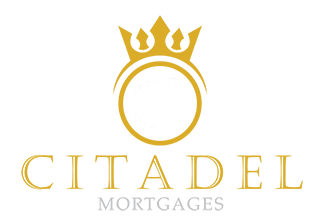How does the First-Time Home Buyer Incentive Work?
The First-Time Home Buyer Incentive (FTHBI) is a government program in Canada that aims to help first-time home buyers overcome the obstacle of saving for a large down payment. This program allows eligible buyers to borrow 5% or 10% of the home’s purchase price from the federal government. The loan is interest-free and must be repaid in full within 25 years or when the house is sold, whichever comes first.
One of the unique aspects of the FTHBI is that it operates on a shared equity basis. This means that each participant in the program owns a percentage of the property. As a result, when it comes time to repay the loan, borrowers will need to repay a proportionate amount based on the property’s market value, not the dollar amount borrowed.
There are different options available depending on the type of home being purchased. For existing homes, borrowers can receive 5% of the purchase price. For new construction homes, borrowers can receive 5% or 10% of the purchase price. And for new or resold manufactured or mobile homes, borrowers can receive 5% of the purchase price.
What are the Requirements for the First-Time Home Buyer’s Incentive?
To be eligible for the First-Time Home Buyer Incentive, there are several requirements that must be met:
- Citizenship or Legal Residency: You must be a Canadian citizen, permanent resident, or legally authorized to work in Canada.
- First-Time Home Buyer: You must be a first-time home buyer, meaning you have never owned a home before. However, there are exceptions for individuals who have gone through a divorce or the breakdown of a common-law partnership, as well as those who have not lived in a home they owned (or that was owned by their spouse or common-law partner) within the last four years.
- Minimum Down Payment: You must have sufficient funds to make the minimum down payment required for the home purchase.
- Mortgage Default Insurance: Your mortgage must be pre-approved and covered by mortgage default insurance, which is required for mortgages with a loan-to-value ratio greater than 80%.
- Income and Purchase Price Limits: The FTHBI has income and purchase price limits that vary depending on the location of the property. In most parts of the country, the mortgage amount cannot exceed four times your qualifying income. However, in Toronto, Vancouver, and Victoria, the limit is 4.5 times your income. The total household income cannot exceed $120,000, except in Toronto, Vancouver, and Victoria, where the cutoff is $150,000.
How to Apply for a First-Time Home Buyer’s Incentive?
If you meet the eligibility requirements and have been pre-approved for a mortgage by a lender, you can apply for the First-Time Home Buyer Incentive. Here is a step-by-step guide on how to apply:
- Pre-Approval: Get pre-approved for a mortgage by a lender. This is an important step as it determines the maximum loan amount you can receive under the FTHBI.
- Find a Home: Once you have been pre-approved, start looking for a home that fits within the FTHBI requirements.
- Complete the Application Forms: Fill in the application forms found on the FTHBI website. These forms will need to be submitted by your lender on your behalf.
- Contact the Closing Service Provider: If your application is successful, you will need to contact the closing service provider, FNF Canada, at least two weeks before the closing date of your home purchase. Provide them with the necessary information and the contact details of your lawyer or notary.
- Initiate the Incentive: Phone FNF Canada at 1 (855) 844-4535 to initiate your Incentive. This step should be completed at least two weeks before the closing date of your home purchase.
How Can a First-Time Home Buyer Incentive Help You Buy a Home?
The First-Time Home Buyer Incentive can be a valuable tool for first-time home buyers who are struggling to save for a large down payment. By borrowing from the government and using the FTHBI funds to increase their down payment, borrowers can have more equity in their home right from the start. This can help decrease the amount they need to borrow, improve their chances of meeting the minimum down payment requirements, and potentially reduce their monthly mortgage payments.
The FTHBI also offers interest-free borrowing, which means that borrowers won’t have to worry about additional interest charges on their loan. Additionally, there are no penalties for repaying the loan early, giving borrowers the flexibility to pay it back at any time without selling their home.
The potential savings offered by the FTHBI can vary depending on factors such as the purchase price of the home and the interest rate on the mortgage. However, based on calculations using the Government of Canada’s FTHBI calculator, borrowers can expect to see monthly mortgage savings. For example, a 5% FTHBI loan on a $725,000 home in Toronto with an $80,000 down payment and a 25-year mortgage at a 5.5% interest rate could result in monthly savings of approximately $264.11. Similarly, a 5% FTHBI loan on a $500,000 home in Calgary with a $30,000 down payment and the same mortgage conditions could result in monthly savings of $183.14.
How Much Does the First-Time Home Buyer Incentive Cost?
The cost of the First-Time Home Buyer Incentive depends on several factors, including the purchase price of the home and its eventual market value. As a shared equity program, the government essentially owns a percentage of the home and is entitled to a proportional share of its value when the loan is repaid.
If the value of the home increases over time, the borrower will be required to pay back a higher amount. The repayment amount will be the lower of either the original loan percentage applied to the current market value of the home or the equivalent of 8% annual growth of the original loan amount. On the other hand, if the value of the home decreases, the borrower will pay back the higher of the two amounts.
For example, let’s say a borrower purchases a $600,000 home using a 5% FTHBI loan worth $30,000. After 10 years, they sell the home for $1,000,000. In this case, 5% of the sale price would be $50,000. However, the annual appreciation limit would cap the repayment amount at $2,400 per year, or $24,000 total. Adding this to the original amount borrowed, the borrower would be required to pay back the lower amount of $50,000.
To avoid paying back more than what was borrowed, borrowers have the option to repay their FTHBI loan as soon as possible. Repayment can be made at any time without penalty and will be based on 5% or 10% of the home’s value at the time, as determined by a professional appraiser.
Is the First-Time Home Buyer Incentive Worth It?
The answer to whether the First-Time Home Buyer Incentive is worth it depends on individual circumstances and financial goals. While the program can provide much-needed assistance in saving for a down payment and reducing monthly mortgage payments, there are also limitations and potential drawbacks to consider.
One of the advantages of the FTHBI is that it can help individuals who are struggling to save a large down payment to enter the housing market. By increasing the equity in the home at the outset, borrowers may have a better chance of meeting the minimum down payment requirements and securing a mortgage. Additionally, the FTHBI offers interest-free borrowing, which can help borrowers save money in the long run.
However, there are limitations to the program. The income and purchase price limits set by the government may be too low to meet the needs of many households, especially in expensive real estate markets like Toronto and Vancouver. Additionally, the shared equity component of the FTHBI means that borrowers may end up paying back more than what they initially borrowed if the value of their home appreciates significantly.
It’s important for potential borrowers to carefully consider their financial situation, long-term goals, and the specific terms and conditions of the FTHBI before deciding if it is the right option for them. Consulting with a mortgage professional or financial advisor can help individuals make an informed decision based on their unique circumstances.
Advantages of the First-Time Home Buyer Incentive
The First-Time Home Buyer Incentive offers several advantages for eligible borrowers:
- Access to Homeownership: The FTHBI can help individuals who are struggling to save for a down payment to enter the housing market and achieve homeownership.
- Increased Equity: By using the FTHBI funds to increase the down payment, borrowers can have more equity in their home from the start. This can potentially lead to lower mortgage payments and improved affordability.
- Interest-Free Borrowing: The FTHBI loan is interest-free, which means borrowers won’t have to worry about additional interest charges on their loan.
- Flexibility to Repay: Borrowers have the flexibility to repay the FTHBI loan at any time without selling their home and without penalty.
- Potential Wealth Accumulation: Although borrowers may have to pay back more than what they initially borrowed, they have the opportunity to accumulate equity in their home as it appreciates in value. This can lead to potential financial gains in the long run.
Disadvantages of the First-Time Home Buyer Incentive
Along with its advantages, the First-Time Home Buyer Incentive also has some disadvantages to consider:
- Limitations: The income and purchase price limits set by the FTHBI program may be too low to meet the needs of many households, particularly in expensive real estate markets.
- Shared Equity Repayment: The shared equity component of the FTHBI means that borrowers may end up paying back more than what they initially borrowed if the value of their home appreciates significantly.
- Appraisal Costs: If borrowers decide to repay the FTHBI loan before selling their home, they will need to pay for a professional appraisal to determine the current market value of the property.
- Potential Market Value Fluctuations: The amount borrowers will need to repay under the FTHBI is dependent on the market value of their home at the time of repayment. If the market value decreases, borrowers may still be required to repay a higher amount based on the original loan percentage.
How Can You Pay Back a First-Time Home Buyer Incentive Loan?
Repaying a First-Time Home Buyer Incentive loan is an important consideration for borrowers. The repayment process is based on the shared equity agreement and depends on the market value of the home at the time of repayment.
When borrowers decide to repay their FTHBI loan, they will need to pay back a percentage of the current market value of their home. This percentage is determined by the original loan amount and the shared equity agreement. The repayment amount will be the lower of either the original loan percentage applied to the current market value of the home or the equivalent of 8% annual growth of the original loan amount.
It’s important to note that if the market value of the home decreases, borrowers will still be required to repay the higher amount based on the original loan percentage. Repayment can be made at any time without penalty, and the amount to be repaid will be based on 5% or 10% of the home’s value at the time, as determined by a professional appraiser.
To avoid paying back more than what was borrowed, borrowers have the option to repay their FTHBI loan as soon as possible. This can be done without selling the home and can help borrowers save money in the long run.
When Is the Right Time to Consider a First-Time Home Buyer Loan Program?
The decision to consider a first-time home buyer loan program, such as the First-Time Home Buyer Incentive, depends on individual circumstances and financial goals. There are several factors to consider when determining the right time to pursue a first-time home buyer loan program:
- Financial Readiness: It’s important to assess your financial situation and determine if you have sufficient funds for a down payment and ongoing homeownership costs. This includes considering your income, savings, and budgeting capabilities.
- Housing Market Conditions: Monitoring the housing market can help you identify favorable conditions, such as lower interest rates or increased inventory, which may make it a good time to enter the market.
- Long-Term Plans: Consider your long-term plans and whether purchasing a home aligns with your personal and financial goals. Assessing factors such as job stability, future income prospects, and desired location can help you determine if homeownership is the right choice for you.
- Eligibility for Assistance Programs: Explore the eligibility criteria and benefits of different first-time home buyer assistance programs, such as the First-Time Home Buyer Incentive, to determine if they align with your needs and goals.
It’s recommended to consult with a mortgage professional or financial advisor who can provide personalized guidance based on your unique circumstances.
Frequently Asked Questions about the First-Time Home Buyer Incentive
What are the other popular first-time home buyer loans?
In addition to the First-Time Home Buyer Incentive, there are other popular loan programs available to first-time home buyers. These include:
- Home Buyers’ Plan (HBP): The Home Buyers’ Plan allows first-time home buyers to withdraw up to $35,000 from their Registered Retirement Savings Plan (RRSP) without incurring penalties. The withdrawn amount must be repaid within a specified timeframe.
- First-Time Home Buyers’ Tax Credit: The First-Time Home Buyers’ Tax Credit is a non-refundable tax credit that can provide up to $750 in tax relief for first-time home buyers.
- Provincial and Municipal Assistance Programs: Many provinces and municipalities offer their own assistance programs, such as grants, tax credits, or low-interest loans, to help first-time home buyers.
What are some alternative assistance programs for first-time home buyers?
In addition to the First-Time Home Buyer Incentive, there are several alternative assistance programs available for first-time home buyers. These programs can vary by province and municipality and may include grants, tax credits, or low-interest loans. Some examples of alternative assistance programs include:
- Land Transfer Tax Rebates: Some provinces offer land transfer tax rebates for first-time home buyers, which can help reduce the upfront costs of purchasing a home.
- Energy Efficiency Grants: Certain provinces provide grants to homeowners who make energy-efficient improvements to their homes, such as installing insulation or upgrading windows.
- Municipal Homeownership Programs: Some municipalities offer homeownership programs that provide financial assistance, such as down payment assistance or forgivable loans, to eligible first-time home buyers.
What is the advantage of being a first-time buyer?
Being a first-time home buyer can provide several advantages, including:
- Access to Assistance Programs: Many government programs and initiatives are designed specifically to help first-time home buyers. These programs can provide financial assistance, tax credits, or other incentives to make homeownership more affordable.
- Lower Down Payment Requirements: Some mortgage lenders offer special programs for first-time buyers that allow for lower down payment requirements, making it easier to enter the housing market.
- Opportunity for Equity Building: By purchasing a home early in life, first-time buyers have the opportunity to start building equity and wealth over time. As property values appreciate, homeowners can potentially benefit from increased equity.
- Stability and Security: Owning a home can provide stability and security, allowing individuals to establish roots in a community and build a long-term investment.
How Much Money Can I Save with the First-Time Home Buyer Incentive?
The amount of money you can save with the First-Time Home Buyer Incentive depends on several factors, including the purchase price of the home, the size of the FTHBI loan, and the interest rate on your mortgage. The FTHBI calculator provided by the Government of Canada can help estimate potential savings based on these factors.
What is the qualifying income for the first-time home buyer incentive?
The qualifying income for the First-Time Home Buyer Incentive varies depending on the location of the property. In most parts of the country, the mortgage amount cannot exceed four times your qualifying income. However, in Toronto, Vancouver, and Victoria, the limit is 4.5 times your income.
How much do first-time home buyers get in Canada?
The amount that first-time home buyers can receive through the First-Time Home Buyer Incentive depends on the type of home being purchased. For existing homes, borrowers can receive 5% of the purchase price. For new construction homes, borrowers can receive 5% or 10% of the purchase price. And for new or resold manufactured or mobile homes, borrowers can receive 5% of the purchase price.
How much money should I save before buying a house in Canada?
The amount of money you should save before buying a house in Canada depends on several factors, including the purchase price of the home, the size of your down payment, and your personal financial situation. As a general rule, it is recommended to have a down payment of at least 20% of the purchase price to avoid mortgage default insurance. However, with the First-Time Home Buyer Incentive, borrowers can access additional funds to increase their down payment.
What happens when I sell my house with the First-Time Home Buyer Incentive?
When you sell your house with the First-Time Home Buyer Incentive, you will be required to repay a portion of the incentive to the government. The repayment amount will be based on the proportionate share of the home’s market value at the time of repayment. If the value of the home has increased, you will need to repay a higher amount. Conversely, if the value of the home has decreased, you will still be required to repay the higher amount based on the original loan percentage.
Conclusion
The First-Time Home Buyer Incentive can be a valuable tool for first-time home buyers in Canada who are struggling to save for a down payment. By borrowing from the government and increasing their down payment, borrowers can have more equity in their home from the start, potentially leading to lower mortgage payments and improved affordability. However, there are limitations and potential drawbacks to consider, such as income and purchase price limits, shared equity repayment, and appraisal costs. It’s important for potential borrowers to carefully assess their financial situation, long-term goals, and the specific terms and conditions of the FTHBI before deciding if it is the right option for them. Consulting with a mortgage professional or financial advisor can provide personalized guidance and help individuals make an informed decision based on their unique circumstances.

Unexpected costs when buying a home in Canada
When buying a home in Canada, there are several unexpected costs that buyers should be aware of to avoid financial surprises. Some of the key

Considering An Early Mortgage Renewal
Why consider renewing your mortgage ahead of time? Well, one big reason is changes in interest rates. If rates drop, jumping on an early renewal

How to get a HELOC on an Investment Property in Canada
To get a Home Equity Line of Credit (HELOC) on an investment property, you need to follow these steps: 1. Know Your Finances: Estimate the

Expert Advice: Buying a House in Cash in Canada
In exploring the possibility of buying a house in cash in Canada, it’s essential to understand the various aspects that come into play. Here’s a

Average Down Payment for a House in Canada
According to the Canadian Real Estate Association, the average house price in Canada hit around $637,673 in August 2022. This means if you’re looking to

Assumable Mortgages: An In-Depth Look
Assumable mortgages are a unique financing alternative that could potentially save you thousands of dollars and simplify the home-buying process. But what exactly are they





